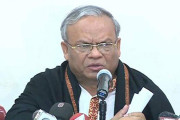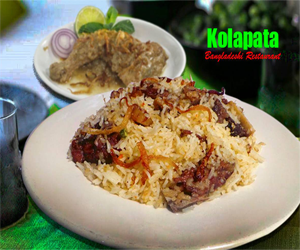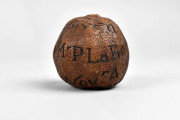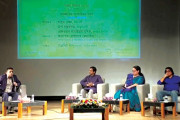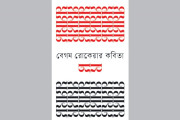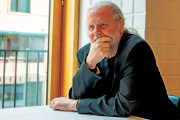।। Dr Mohammad Didare Alam Muhsin ।।
The matter has eventually been taken to court. If the debate were just about sculpture, it might not have caused so much uproar. The reason why the situation has been heated so much is that the sculpture under construction is of Bangabandhu Sheikh Mujibur Rahman, who was the architect of this country. In 1971, he appeared as a saviour in this country for the liberation of millions of people.
Many of Bangabandhu’s admirers see this initiative as a humble attempt in this Mujib Year to perpetuate his memory. On the other hand, a large section of Islamic scholars in this country are strongly opposing the construction of sculpture terming it as un-Islamic. Although the controversy between the two opposing factions was initially limited to heated exchanges and reciprocal processions and rallies, the issue took on a different dimension when some people broke a part of a sculpture of Bangabandhu being erected in Kushtia in the dark of night. There was a storm of condemnation and protest all over the country. As you may have noticed that the debate has taken on a complex shape with a combination of diverse elements – religious, cultural and political.
As I said earlier, a sensitive aspect of the ongoing debate is that Bangabandhu’s name is involved here. On the other hand, most of the people in this country are followers of Islam. The Islamic scholars have a profound effect on them. For this reason, its religious aspect is also very sensitive. One thing you might have noticed is that neither side wants to ignore religion. While Islamic scholars are busy proving the religious unacceptability of sculpture with evidences from the Qur’an and the Hadith, those who are strongly in favour of sculpture, on the other hand, are also trying to draw attention towards the presence of sculpture in different Muslim countries to establish the point that there is no conflict between Islam and sculpture.
The religious aspect of the issue covers a large part of the whole debate. What are the key points of the Islamic scholars? They think that the issue has its involvement with the core beliefs of Islam. Unitarianism is the main pillar of the Islamic faith. Here associating someone directly or indirectly with Allah is considered an unforgivable sin. According to the Holy Quran, Allah may consider forgiving all kinds of sins as He wills, but He will never forgive the sins of shirk under any circumstances. The Prophet (SAW) eradicated idolatry from the Arabian Peninsula, which has never returned to Muslim society in the last 1,500 years. The scholars claim that the creation of a three-dimensional image of a human or any other animal is strictly forbidden in Islam as evidenced by a number of reliable hadiths narrated from the Prophet (SAW). Moreover, there is an indication from the hadiths that idol-worship began in the time of the earlier prophets by hanging pictures or creating images of the virtuous people of the nation in their time for the purpose of gaining inspiration.
Meanwhile, opposition to sculpture has provoked strong reactions in the country’s cultural arena and among art-loving people. They see it as a major blow to art and culture. In the modern world, sculpture is considered not only as a unique art-work, but also as an important vehicle for shaping up the emotions, history and tradition, or social and ideological thoughts and spirits of the people. It could be a monument to a glorious moment in history, a memorial to one of the nation’s greatest children, or in some cases a religious deity.
There are reports of the presence of sculptures of eminent personalities of national history in many countries of the Muslim world. Among them are Mustafa Kemal Ataturk of Turkey, Quaid-e-Azam Mohammad Ali Jinnah of Pakistan, Ayatollah Khomeini of Iran, Jamal Abdul Nasser of Egypt, Saddam Hussein of Iraq and, among the late Muslim scholars, Allama Iqbal, Abul Kashem Ferdousi, Jalaluddin Rumi and others. A question that is pertinent here is whether these sculptures of national heroes or sages are being worshiped anywhere in the world or if there is any possibility of them being worshiped in the near or distant future. In the case of this country, the question is particularly significant because Bangabandhu Sheikh Mujibur Rahman, the architect of this country, has been chosen the best Bengali of the millennium in the opinion polls of news media like BBC. If it were not a Muslim society, but a different one used to worship idols, many people might even have worshiped him as a deity.
Here, one thing you may have noticed is that most of the above mentioned sculptures have been created in different parts of the Muslim world, in honour / remembrance of national heroes, during the Muslim Renaissance period, when these Muslim ethnic groups gained their independence in recent past from the imperialist powers after struggling for a long time or have somehow been able to defend their country from being subjugated to them. As a result of being subjugated under Western powers for a long time or as the West has become more powerful in economic, military and political spheres, on the one hand these Muslim ethnic groups have become rich in modern science and technology through getting in touch with them and on the other hand some of them developed a tendency to imitate the imperialist powers as models in every sphere of life. I don’t want to mean that something similar is going on in the case of sculpture, too. However, if you look a little closer, towards the golden chapter of the history of Islam, when Islam existed in its glory as a world power, do you see any examples of such sculptures of world-famous heroic personalities of the Muslim nation at that time? If so, today you would have seen many sculptures of people like Caliph Umar, Commander Khalid ibn Al-Walid, Commander Tariq ibn Ziyad, Caliph Harun al-Rashid, Sultan Mahmud of Ghazni, Mughal Emperors Babur, Akbar or Aurangzeb in different parts of the Muslim world. There is, though, a report of a sculpture of the Crusader hero Saladin Ayubi in Damascus, but it was built in nineties in the last century during the tenure of the late Syrian President Hafez al-Assad.
So, does it mean that Islamic culture is against or opposed to architecture? That is not the case. Throughout the history of Islam, architecture has developed in different ways under the patronage of the Muslim rulers — mainly through mosques, minarets, forts, palaces, mausoleums, etc. Through these establishments, Muslim architectural art developed a unique style. Notable examples world famous Muslim architectures include Al Hambra in Spain, Minaret of Jam in Afghanistan, Taj Mahal in Agra, Qutub Minar in Delhi, etc. The Qutub Minar in Delhi has been standing tall for over 800 years as memory of Qutb al-Din Aibak, India’s first independent Muslim sultan. Memorial at Bahadur Shah Park commemorating the Sepoy Mutiny of 1857, Minar-e-Pakistan in Lahore of Pakistan as a memorial to the historic Lahore resolution of 1940, Shaheed Minar in memory of the martyrs of the 1952 language movement and the National Mausoleum dedicated to the martyrs of the 1971 War of Independence in Bangladesh are but a few examples of the modern age.
Probably the other important element of the controversy over the sculpture is its political dimension. In this country, regardless of party affiliation, everyone gives importance to the views of Islamic scholars on religious issues. The problem arises when some form of political connection is presumed to be in effect. The reason for such suspicion in this case is that many of those who are vocal in their opposition to sculpture are directly involved in politics. There is also a gross presumption that the opponents are actually on the field on behalf of one or more big political parties. If the Islamic scholars want to emphasize on the religious aspect of the issue and make their opinion equally acceptable to all, they have to eliminate this suspicion. The eminent Islamic scholars, who are not active in politics, may play an important role here. On the other hand, keeping Bangabandhu above all sorts of controversies should be our priority. We know that he was a devout Muslim and that his daughter Hon’ble Prime Minister also regularly performs religious rites. Just as it is important to build a monument in his honour to keep his memory alive, it is also important to keep him undisputed and to do for him what will provide solace to his departed soul as per our belief as Muslims. Therefore, the policymakers should actively consider to sit down with Islamic scholars and listen patiently to their objections without giving a chance for the debate to get more smoky and to determine how much merit their objections hold in religious standards and how much they are politically motivated.
The writer is a Professor of Pharmacy, Jahangirnagar University. The opinions expressed in this article are the writer’s own.






















